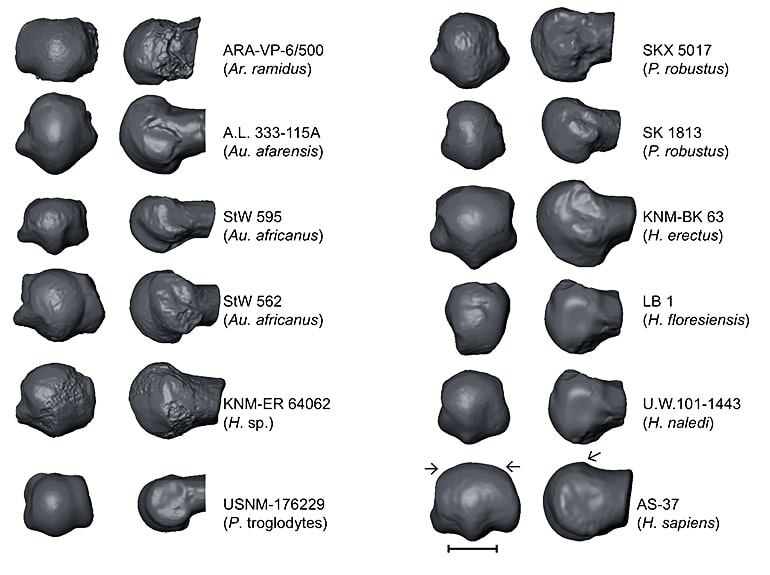Adaptations for bipedal walking in primates occurred as early as 4.4 million years ago, according to new research.
The feet of primates function as grasping organs. But the adoption of bipedal locomotion—which reduces the ability to grasp—was a critical step in human evolution.
The new study finds that in the process of adapting to bipedal walking, early hominin feet may have retained some grasping ability.

Coauthor Carrie S. Mongle, a doctoral candidate in the interdepartmental doctoral program in Anthropological Sciences at Stony Brook University, explains that by studying and comparing the toe joint morphologies in fossil hominins, apes, monkeys, and humans, the researchers identified novel bony shape variables in the forefoot from both extinct to existent hominins that are linked to the emergence of bipedal walking.
The paper contains data that provide evidence for how and when the hominin pedal skeleton evolved to accommodate the unique biomechanical demands of bipedalism.
3.3 million-year-old fossil shows age of our spines
The findings also corroborate the importance of a bony morphology in hominins called the dorsal head expansion and “doming” of the metatarsal heads—essential for bipedalism and a unique feature that distinguished hominins from other primates.
The National Science Foundation, National Institutes of Health, the Leakey Foundation, and the Wenner-Gren Founation supported the research.
Source: Stony Brook University



